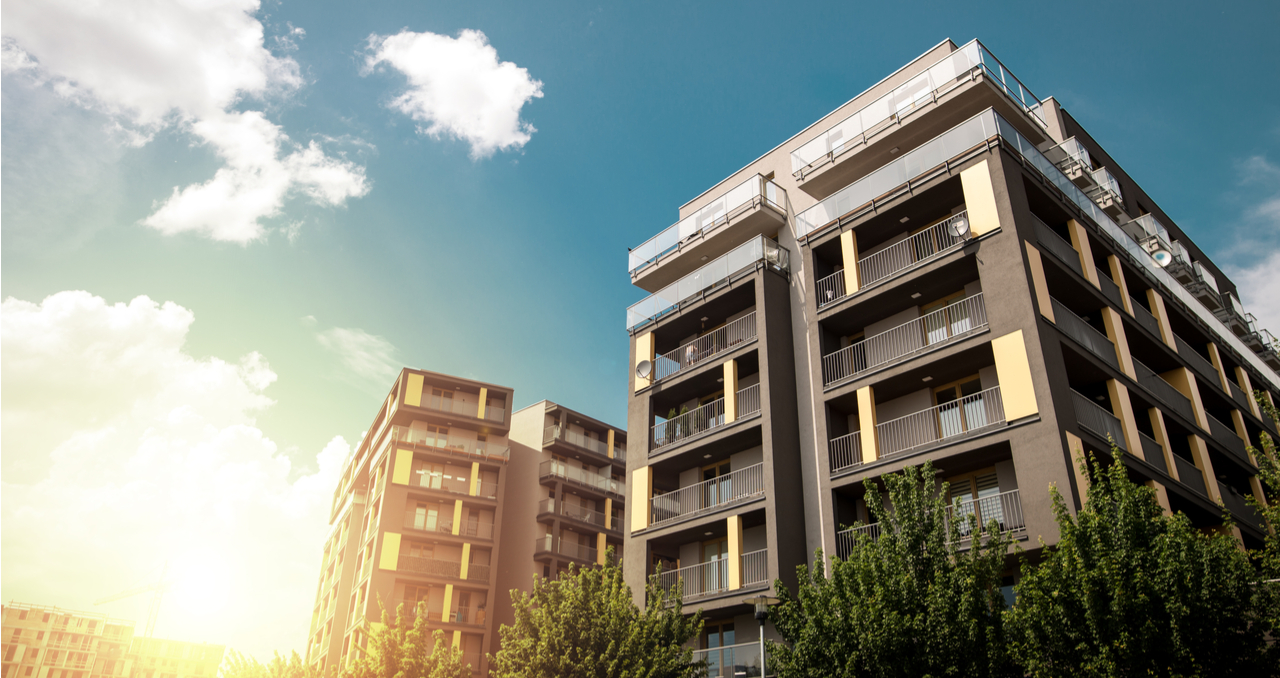Introduction Stormwater runoff refers to the water from snowmelt or rainfall that flows over land. Generally, it includes runoff from

The type of HVAC system you choose for the multi-family building is crucial since it tends to have long-term implications. Besides, the HVAC system ensures the comfort of the indoor spaces, and tenants want as much control over the comfort as possible.
Unfortunately, achieving the cooling and heating needs of several families can be energy inefficient and expensive. So, to achieve the perfect balance of comfort and fiscal responsibility are certain factors you need to consider. One of these factors is finding the most efficient HVAC system to install in your apartment complex or multifamily property.
In this guide, we’ll be looking at some of the aspects you should be paying close attention to before you make your final decision!

Decentralized Vs Centralized HVAC design for Apartment & Multifamily Buildings
In general, building owners have 2 options when looking for HVAC design for multifamily complexes. That is; decentralized and centralized HVAC systems. Both options offer key elements that help multifamily property management, but centralized systems are usually preferred in larger buildings because of their energy savings. On the downside, centralized systems are expensive to install, especially when the multifamily complex exceeds a certain number of residential units.
That aside, here’s what you need to know about each type of HVAC system;
A centralized HVAC system is supported from a central location like a mechanical room in the basement. The system filters and conditions air then distributes it throughout the building through ductwork and fans.
If your building already has inbuilt ductwork for air conditioning and heating, a central HVAC system is the best option for MEP design for apartment/ multifamily complexes. Besides, central HVAC systems run more efficiently compared to their decentralized counterparts.
Common types of Centralized HVAC design for apartment buildings
Geothermal HVAC Systems. This is one of the most energy-efficient types of HVAC design systems. It’s a rental cooling & heating system that transfers heat from the ground. The only downside is that its upfront costs are a bit high. Other than that, using this type of HVAC design for condos and apartments helps to reduce utility bills by about 30 – 70%.
Four-Pipe HVAC Systems. As the name implies, this HVAC system has 4 insulated pipes; 2 return lines, and 2 supply lines! One line is dedicated to hot water, while the other has chilled water. The pipes run to air handling units, either stored in space above the ceiling or mechanical rooms, that use the supplied water to cool or heat the air temperature. 4-pipe systems run efficiently but are costly to install.
Benefits of central HVAC systems
Drawbacks
Decentralized HVAC design for Multifamily & Apartment buildings
Unlike centralized systems, decentralized HVAC design for apartments is compartmentalized. This simply means that each unit in the multifamily or apartment buildings receives separate cooling and heating. However, most of these systems lack maximum efficiency, but they’re more cost-effective to install than the centralized ones.
Common types of HVAC units for Apartment buildings
Self-contained HVAC systems. Self-contained HVAC units are forced-air HVAC systems that provide cooling and heating to individual units. More importantly, they’re installed in each apartment unit, making them easy to access when HVAC services are needed. Moreover, they are energy-efficient, less expensive and easier to install, and suitable for multifamily properties with a smaller unit capacity!
Packaged Thermal Air Conditioning Units (PTCAs). This MEP design for multifamily complexes comprises a self-contained air conditioning and heating HVAC system. These air conditioning units are installed directly through a wall and feature heat sinks and vents both outside and inside the building. Unfortunately, this forced air unit isn’t as efficient as other alternatives and has a short life cycle. More notably, it requires comprehensive installation as it contains several components including evaporators, expansion valves, condensers, and compressors.
Final Word
In addition to choosing an efficient HVAC design for multifamily buildings, other factors like sealing the cooling and heating ductwork will instantly optimize your property’s system. Also, smart control sensors are a great idea since they allow you to monitor the maintenance needs and performance of your systems. There are many heating and cooling systems available, so it’s possible to find the exact one to suit your needs. If you would like to learn more about which AC or heating system is right for your living space, contact us via our online form to learn more.
All in all, there are many energy-efficient cooling and heating systems for multifamily properties available. To learn more about the ideal MEP design for condos or apartment buildings in California, contact Innodez!
About Author
InnoDez